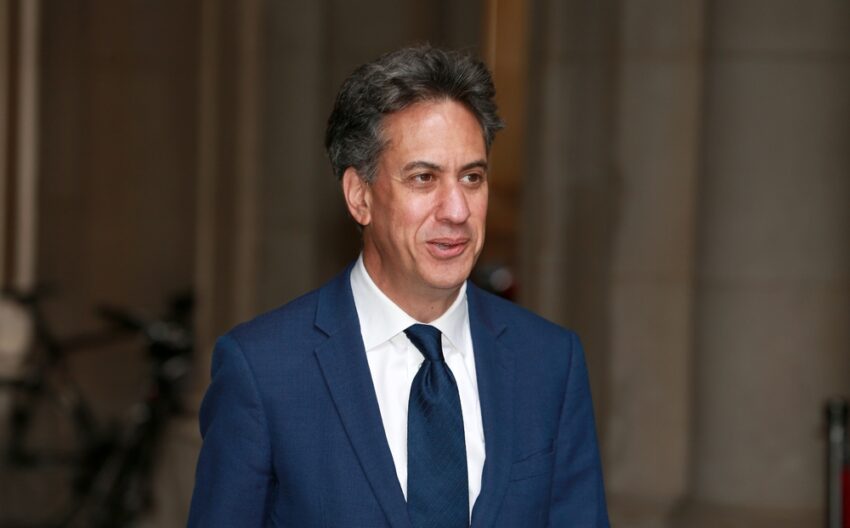Trump’s stunning comeback: 6 takeaways from his resounding win
Trump’s victory looks like a realignment.
Donald Trump didn’t just complete a once-unlikely political comeback — he won a resounding victory despite legal jeopardy, the unpopular end of federal abortion rights and rhetoric that repelled broad segments of the electorate.
Kamala Harris lost to Trump in stunning fashion, just as Hillary Clinton, the first woman to be her party’s presidential nominee, did in 2016. The former president built a more diverse coalition of voters than any Republican nominee in 20 years, despite running a racially charged, testosterone-soaked campaign that demonized immigrants.
The votes are still being tabulated, but here are five takeaways from Trump’s victory:
Trump’s 2016 victory felt like a historical accident. Tuesday feels like a realignment.
For a politician whose first victory was powered almost exclusively by white voters, Trump in this election assembled a remarkably diverse coalition driven by his unique appeal — or perhaps Harris’ unique vulnerabilities — among men.
According to the network exit polls, nearly one in five Trump voters on Tuesday were people of color. In his first election in 2016, about 13 percent of Trump voters were people of color.
Latino voters, once a reliable bulwark of the Democratic base, continued their recent shift right. The two major voter surveys — the network exit polls and AP Votecast — differed on whether Harris won Latinos by 8 points or 15 points. But either way, it was a massive shift from Biden’s roughly 30-point win among Hispanic voters four years ago.
Trump also made inroads with Black voters, breaking into double digits after hovering just below 10 percent in the two previous elections. Trump won 12 percent and 15 percent of Black voters, respectively, in the two surveys.
The Republican’s gains were especially concentrated with men, whom Trump’s campaign targeted assiduously. The two surveys don’t agree on whether Trump actually won Latino men — one says he did narrowly, the other says Harris won them narrowly. But Trump also won between 20 and 25 percent of Black men.
These gains didn’t just propel Trump to victory in the battleground states. They could ultimately result in him being only the second Republican presidential candidate since 1992 to win the popular vote — though it will take a couple of weeks to finalize the vote count in blue California to know for sure.
The country voted against a woman running for president — again
For the second time in three election cycles, the American public voted against a female Democratic nominee in favor of Donald Trump.
Harris, in a break from Hillary Clinton’s approach in 2016, did not play up the barrier-breaking nature of her potential presidency. While Clinton leaned in on white pants suits and breaking a literal glass ceiling at New York’s Javits Center, Harris sidestepped gender questions.
Neither strategy worked.
Overall, women broke for Harris, but white women favored Trump. Fifty-four percent of women supported Harris, according to the TV networks’ exit polls. Only 26 percent of women of color supported Trump, but 52 percent of white women did.
Democrats maintained that the overturning of Roe v. Wade would motivate women to get to the polls. The party had over-performed polling in every election since the Supreme Court’s 2022 Dobbs ruling overturning federal protections for abortion.
Until tonight.
Harris made reproductive freedom a central pillar of her campaign, highlighting on the Democratic National Convention stage and in ads the harrowing stories of women whose healthcare choices have been limited by new state abortion bans. In the weeks to come, operatives will be looking for clues in the data about whether they over-relied on the issue of abortion, whether the country has grown desensitized to it or if its political potency was simply neutralized by Trump or rendered secondary to economic concerns.
Biden’s legacy takes a massive hit
He was nowhere to be found in the campaign’s final days — because he was a major liability for Harris. Joe Biden’s decision to step aside in July gave Democrats a chance, but his initial misread of Democrats’ 2022 midterm successes as validation of his presidency and bid for a second term put his party at an enormous disadvantage. So did his denial of his own mortality. And barring a turnaround, it appeared Harris couldn’t overcome the public’s frustration with his economy and the majority sentiment that the country is on the wrong track.
Yes, she herself struggled to come up with an answer to the oft-asked question of how she would differ from Biden — a question of major significance to swing voters. But Biden, whose sputtering debate performance in June effectively ended his decades-long political career in 90 minutes, has long struggled to communicate a clear, convincing case for a term that’s been marked by several major legislative accomplishments and an economy that is outpacing every other country in the world.
While coverage focused on Trump’s scattered statements at rallies, his campaign and supporting super PAC blanketed swing state airwaves with paid media tying Harris to Biden.
In a way, Harris’ inability to match Biden’s 2020 vote totals validates his uniquely broad appeal. But her loss also complicates the president’s legacy: He remains the politician who defeated Trump after his first term, but has now had a significant part in the apparent failure to block him from returning to power.
Ground game runs aground
In the final month of the campaign, Harris’ campaign knocked on two million doors — in Pennsylvania alone. Trump’s campaign, meanwhile, seemed to be gambling by outsourcing much of its field operation to the likes of Elon Musk, whose PAC was paying canvassers and struggling to verify much of the data coming in.
It was a clear strategic difference between the two campaigns, and many operatives believed it would give Harris a leg up, possibly even a decisive one.
Given the pattern across the map showing the vice president slightly underperforming Biden’s 2020 vote in key counties — and Trump over-performing in rural areas — count on a coming conversation among operatives and donors about traditional door knocking and how even a concentrated, professional effort to mobilize lower-propensity voters may be no match for organic enthusiasm propelling a specific candidate.
Harris’ gambit for Liz Cheney Republicans fell flat
Harris spent crucial days on the campaign trail courting Republicans, even rallying with former Rep. Liz Cheney in Ripon, Wisconsin, the sentimental birthplace of the GOP. It did not work — uniformly, at least.
The set piece in Ripon, a town with a tiny population and not in a swing part of the state, typified a campaign that gravitated at times to broad themes aimed at capturing national media, often at the expense of time on the ground in key counties. In Wisconsin, for instance, Harris didn’t travel to Door County, the one county in the state that voted for the presidential winner in every election since 2000, until Oct.18.
Some progressives pointed fingers at Harris for spending so much time courting Cheney Republicans.
In some Republican strongholds, Harris underperformed Biden’s 2020 margins. In the Republican suburbs of Milwaukee, for example, Harris trailed Biden’s 2020 margins in Washington and Ozaukee counties, but performed two points better in Waukesha County.
In suburban Hamilton County, Indiana, where Nikki Haley won 33.8 percent of voters in a May primary months after dropping out of the presidential primary, Harris trailed Trump by 6 points — only a marginal improvement in a county Trump won by 7 points in 2020.
One other glaring example: Bucks County, Pennsylvania, where a zombie Haley campaign won nearly 19 percent of the vote in April. Watching the movement there, the Harris campaign dropped an additional six-figure ad buy in the upscale collar counties surrounding Philadelphia, including Bucks. But on Tuesday, Trump bagged Bucks by three points — a county Biden had won by four points.
The unsinkable Trump
In 2016, Donald Trump’s election could have been dismissed as something of a lark. But after the last eight years, nothing about sending him back to the White House was hypothetical or abstract.
He has now been twice impeached, is a convicted felon, appointed the Supreme Court justices necessary to overturn Roe v. Wade and ran without the support of his former vice president or dozens of former senior aides and Cabinet members.
And his campaign, once again beset by a familiar in-fighting that has long characterized his various operations, seemed to be stumbling to the finish line: Trump himself was often incoherent on the stump, his rally stemwinders drawing headlines for turning a town hall into a weird dance party, vowing to protect women “whether they like it or not” and his comments glorifying, in different moments, violence toward his political enemies and Arnold Palmer’s genitalia. And that’s to say nothing of the racist and misogynistic rally he held at Madison Square Garden.
That he beat expectations yet again is a reaffirmation of his imperviousness to electoral consequences and an uncanny ability, perhaps unique in the entire history of American politics, to defy political gravity. Returning to the White House after all of this would prove his own infamous adage, the one that many wrongly thought would derail his first run: If you’re a star, they let you do it.
What's Your Reaction?





















































